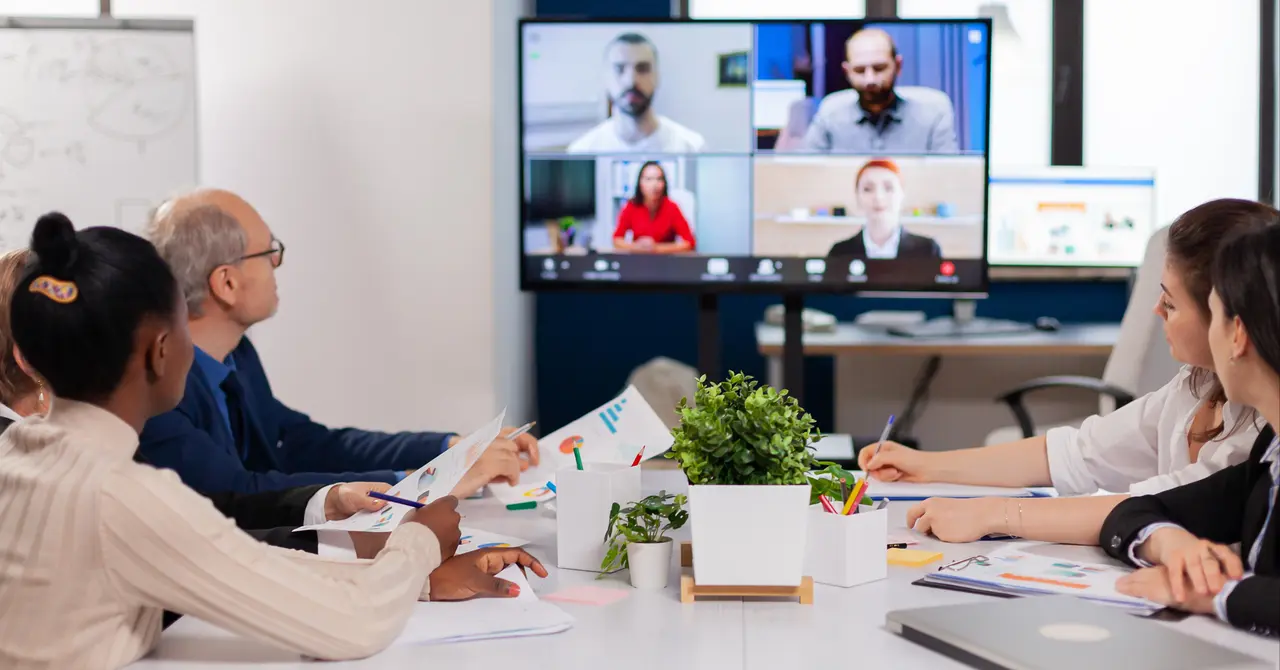Tech Tips to Overcome Hybrid Meeting Challenges
Without the right technology, hybrid meetings can feel like some attendees are in the room, while others are only able to peek in through a window. Remote participants aren’t able to present or even see and hear in the same way. That’s not an equitable meeting experience, and the limitations can be frustrating and detrimental to collaboration.
To collaborate effectively, all participants need clear audio and video, as well as the ability to share content. So if your teams are struggling with hybrid meetings because some employees are only getting a glimpse of what’s going on, here are some tips to help.
How New Technology Solves Collaboration Challenges
Upgrading or adding new technology can solve these meeting challenges, but only if you choose them strategically. The solutions will vary based on space, budget, room use, and user preferences.
- Displays should be large enough for the space so in-room attendees can easily see other participants and read shared content.
- Cameras should show everyone in the meeting without distorting them. During a video conference, participants should be able to easily identify who is speaking and see their facial expressions.
- Microphones must be right for the space. For example, consider whether that space is a meeting room where the furniture never moves or whether it’s a flexible space where users can move the seating around. Once you know how a room will be used, you can decide whether tabletop, ceiling, or other microphone types will work best.
- Loudspeakers should allow in-room participants to easily hear all speakers–even those speaking at lower volumes. That means choosing the right type and number of speakers, as well as placing them strategically throughout the room.
These are only some of the technologies that can help solve your hybrid meeting challenges. You may want PCs, control panels, meeting room systems, or other technologies, depending on your budget, industry, organization size, and room purpose.
Providing Meeting Equity and Access
Choosing collaboration solutions is about more than seeing and hearing others for the sake of convenience. Technology should help all hybrid meeting participants have the same levels of access and opportunity.
Achieving meeting equity is particularly challenging in hybrid meetings because in-room participants can speak or share material directly with each other. On the other hand, remote participants can try to virtually look into the room but are limited by what the technology and other meeting attendees allow. However, with the right technology, both in-room and remote participants can use the same tools to talk, share, annotate, and more.
True collaboration means no one has to be a passive onlooker, everyone is able to work on the same projects in the same way, and everyone can contribute to the same degree. This helps improve equity not just in meetings, but across an organization.
Simplifying Hybrid Collaboration
Addressing every hybrid meeting challenge in every space requires careful consideration and planning. When updating your collaboration solutions, it can save you time and resources to work with a technology partner.
If you want to get more hybrid collaboration recommendations as well as tips from experienced audiovisual professionals, read the white paper: "Pro Tips for Building Hybrid Meeting Rooms."

